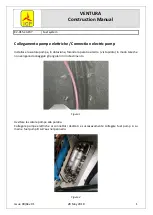
C. Rudder Limiting:
The G550 does not have a separate load limiter unit, but relies instead
upon MWS software to compute maximum rudder deflection for a given
airspeed, matching airloads on the rudder surface with the hydraulic
function of the rudder actuator. Although at low airspeeds full rudder travel
of twenty-two degrees (22°) is available, at higher airspeeds less rudder
travel is necessary to achieve the desired amount of aircraft heading
control. To avoid excessive loads, the rudder hydraulic actuator uses
internal pressure switches to signal the MWS when full hydraulic pressure
output of the actuator has been reached. The MWS formulates a CAS blue
advisory message text of “Rudder Limit” for display on the CAS window
indicating the maximum rudder hydraulic power assist condition.
The amount of rudder deflection at which maximum rudder hydraulic assist
occurs is dependent upon airspeed. As speed increases, air loads increase
as the rudder is displaced. Since the rudder surface is linked mechanically
to the rudder hydraulic actuator shaft, the force of the rudder airload
opposes the force of the hydraulic system(s) moving the actuator.
Whenever the airload force equals hydraulic system force (1,500 psi with
both left and right systems operating or 3,000 psi with a single hydraulic
system) no further rudder displacement is possible, and the “Rudder Limit”
advisory message is displayed on the CAS window.
D. Rudder Hard Over Prevention System (HOPS):
Movements of the rudder contrary to the commanded position are limited
by a Hard Over Prevention System (HOPS) that incorporates eight
switches to monitor mechanical and hydraulic rudder operation (see Figure
3. Four external mechanical switches are integrated into the rudder control
linkage to provide a comparison reference for four switches mounted
internally within the hydraulic actuator. The external HOPS switches are
noted on Figure 8. Of the four external switches, two are for left hydraulic
system reference and two are for right hydraulic system reference. Of the
two switches for each hydraulic system, one provides a left rudder
command reference and the other provides a right rudder command
reference. The switches are plunger-type contact switches, and are
installed on each side of a bracket attached to the command input side of
the rudder actuator. On one side of the bracket are the left rudder
command input switches for the left and right hydraulic systems. On the
other side of the bracket are the right rudder command input switches for
the left and right rudder systems. Inserted between the switches in the
bracket is a cam-type arm mated to the rudder hydraulic actuator output
linkage. The cam arm is positioned with a defined amount of clearance
between the plunger-type switches. Under normal conditions, the bracket
holding the switches moves with rudder command input and the cam arm
moves with the rudder hydraulic actuator output, so the clearance between
the switches and the arm is maintained.
If a malfunction occurs and the rudder moves opposite to or further from
the commanded direction, the cam arm that is attached to the output
linkage of the rudder actuator will move to close the clearance gap
between the cam arm and the plunger-type switches, making contact with
the switches on the side of the bracket. When the plungers of the switches
are depressed, a relay closes and an electrical signal is sent to a
corresponding set of switches mounted internally within the hydraulic
OPERATING MANUAL
PRODUCTION AIRCRAFT SYSTEMS
2A-27-00
Page 25
August 14/03
Title Page
Prev Page
Next Page
TOC
Summary of Contents for G550
Page 6: ...Title Page Prev Page Next Page TOC ...
Page 16: ...Title Page Prev Page Next Page TOC ...
Page 18: ...Title Page Prev Page Next Page TOC ...
Page 20: ...Title Page Prev Page Next Page TOC ...
Page 32: ...Title Page Prev Page Next Page TOC ...
Page 44: ...Title Page Prev Page Next Page TOC ...
Page 46: ...Title Page Prev Page Next Page TOC ...
Page 54: ...Title Page Prev Page Next Page TOC ...
Page 58: ...Title Page Prev Page Next Page TOC ...
Page 60: ...Title Page Prev Page Next Page TOC ...
Page 68: ...Title Page Prev Page Next Page TOC ...
Page 80: ...Title Page Prev Page Next Page TOC ...
Page 82: ...Title Page Prev Page Next Page TOC ...
Page 84: ...Title Page Prev Page Next Page TOC ...
Page 86: ...Title Page Prev Page Next Page TOC ...
Page 88: ...Title Page Prev Page Next Page TOC ...
















































